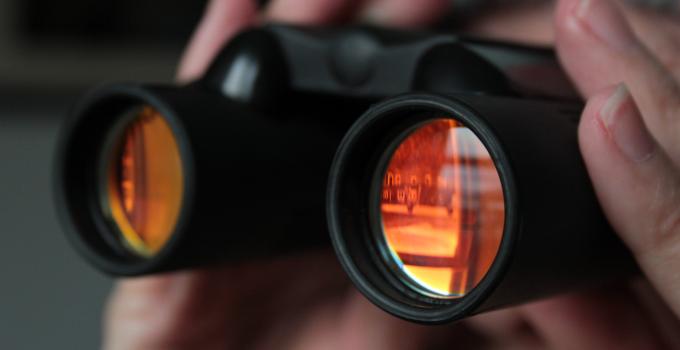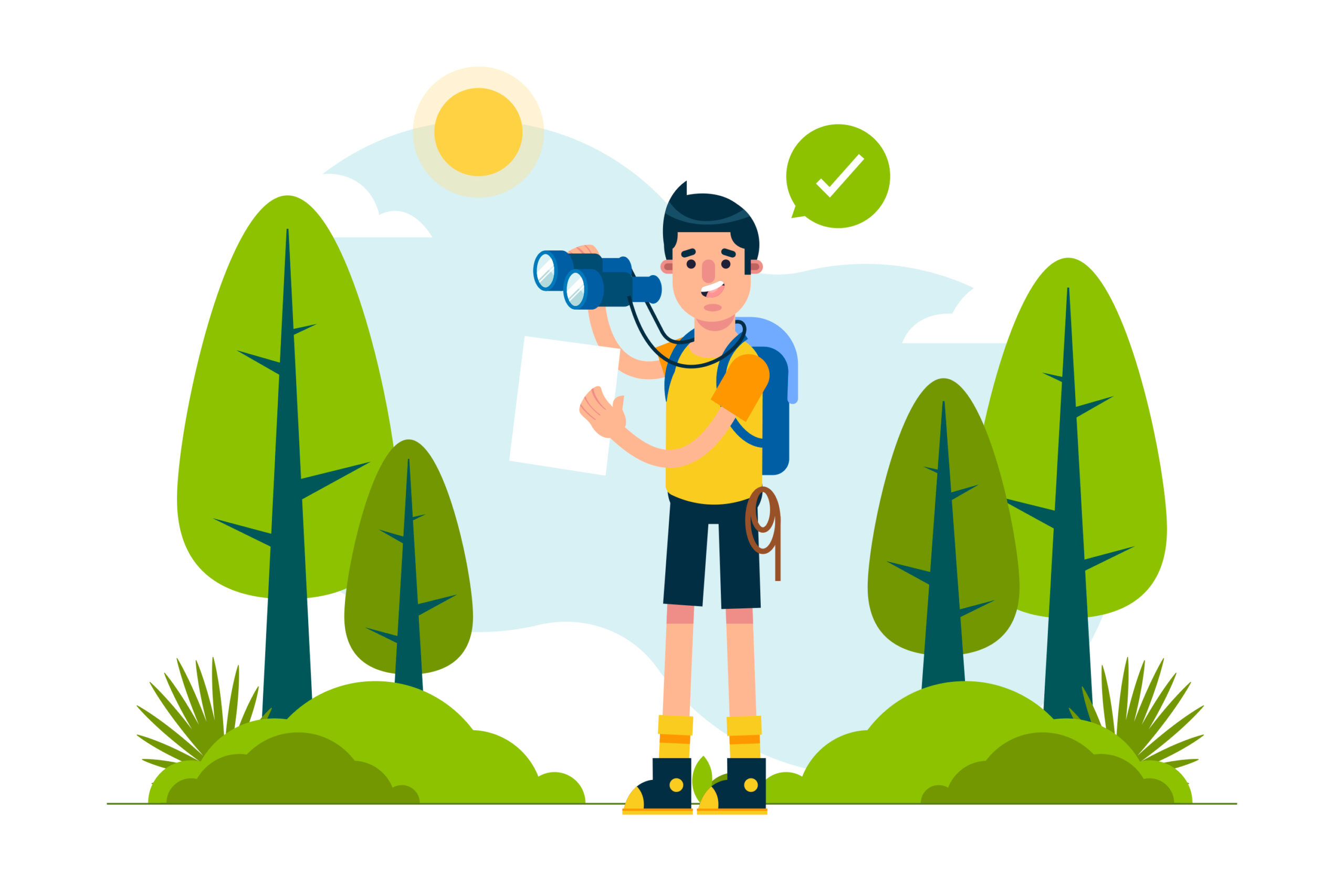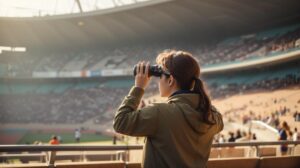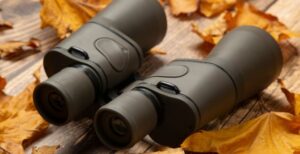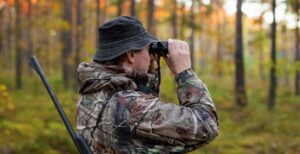Are you someone who loves the outdoors whether it’s hunting, bird watching or just going on a trip? If you are an outdoor lover then you definitely need a pair of binoculars to see the world more closely.
If you are new to buying binoculars you might feel a bit confused when you see all the technical stuff about binoculars. Binoculars are a complicated tool with lots of parts.
In this article we will make it simple so that you can understand easily. We will talk about all the parts in binoculars and functions they perform.
Binoculars Through History
In 17th century the first optical telescope was invented. But at that time the problem was that it worked for only one eye.
It was difficult to put two telescopes next to each other for a better view. This led to the idea of binoculars. In 1854 an Italian inventor named Ignazio Porro invented Porro prism binoculars. These binoculars fixed the problem of making things appear bigger and the right way up in a compact and convenient case.
Later on in 20th century, as evolution of binoculars became popular, binoculars were made better with the invention of roof prism. This technology made them more compact and easier to carry around.
How Do Binoculars Work?
Binoculars are like two mini telescopes placed next to each other. They are connected in the middle. It allows you to adjust them to fit your face comfortably. This design helps you see things up close and clearly with both eyes. Binoculars are a useful tool for different activities.
You will find 2 numbers given on the binoculars like 8×42. You might wonder what these numbers mean. Well, the first number tells you about the magnification of binoculars. Second number ‘42’ tells you the diameter of objective lenses in millimeters.
There are two major parts of binoculars, optical parts and mechanical parts. Let’s discuss different parts of binoculars and their function to know how binoculars work.
The optical parts of binoculars
To understand how binoculars work it is important to study the components responsible for bending and focusing light to make the view appear larger.
Objective lenses
The objective lenses in binoculars are lenses at the front. The size of these lenses is important because it determines how much light the binoculars can gather. Bigger lenses collect more light. It results in sharper and clearer images with more details. This is helpful in low light situations and during nighttime observations.
Eyepiece/Ocular lenses
The eyepieces are also known as ocular lenses. These lenses are the ones you look through when using binoculars. When you look through them you are getting a magnified view that makes objects appear closer and more detailed.
Prism system
The actual image of the binoculars is upside down without the prisms. The prism system in binoculars fixes this problem and shows the correct view when you look through the binoculars.
These prisms are made of glass. When light goes through them, they bounce it which turns the upside down image right side up.
There are two main kinds of prisms in binoculars: Porro prisms and roof prisms.
Porro prisms
Porro prisms are special glass pieces that are horizontally placed to each other. They help to flip the image you see. This technology has been used for centuries.
Binoculars with Porro prisms are bigger and heavier because these prisms are arranged horizontally. But they are simpler to make which means they cost less than binoculars with roof prisms.
Roof prisms
Roof prisms in binoculars are arranged in a straight line. This makes the binoculars compact and effective.
In these prisms light does not go in a straight line. It bounces around inside the prisms and then gets back into a straight line so you can see clearly. This longer journey of light also means you get more magnification.
But these prisms are more complicated and costly to make so binoculars with roof prisms are usually more expensive.
The mechanical parts of binoculars
Apart from the lenses and other optical parts, many modern binoculars also have a set of mechanical parts.
Focus wheel
Most binoculars have a special wheel between the two barrels. When you turn this wheel it makes both sides of the binoculars focus at the same time. It helps you get a clear picture.
Diopter adjustment
Many people do not have same eyesight in both eyes. So to use binoculars without straining your eyes you need to make sure both eyes can see things clearly.
First adjust the focus with only left eye using center focus wheel. Then adjust the focus of right eye using the diopter. You will get a sharp and clear image.
Barrel or tube
The barrel is an outer cover of binoculars that holds everything inside. It keeps the important parts of binoculars safe and in place. Some binoculars have special rubber rings that seal them tightly so that dirt and water can not get inside.
Barrel bridge hinges
The hinged bridge is connector in the middle of binoculars. It holds both sides together. It allows you to move them closer or farther apart to match the distance between your eyes. This way you can make the binoculars comfortable to use and see things clearly.
Types Of Binoculars
Different kinds of binoculars can be put into 4 categories depending on size of objective lenses.
Compact binoculars
These binoculars have objective lens diameter of 30 mm and less. They are small, lightweight and easy to carry. These binoculars do not have great magnification but they are great for hiking and traveling.
Mid size binoculars
The diameter of objective lenses in mid size binoculars ranges between 30mm to 40mm. They are easy to carry and give great performance. These are an excellent choice for bird watching, nature observation and other outdoor activities.
Full size binoculars
These binoculars have objective lenses of 40mm to 50mm or more diameter. They are a perfect choice for low light conditions because they provide bright and sharp images in dim light. But they are heavy and require a tripod for steady image view. These binoculars are useful for a detailed observation of wildlife and excellent for stargazing and astronomy.
Binocular Uses
Binoculars are multi functional optical instruments that have a wide range of uses in different applications of life. Here are some of the uses of binoculars in day to day life:
Binoculars for Outdoor Activities:
Birdwatching: Binoculars are very important for birdwatching. They enable them to observe birds of different kinds from a distance without disturbing them.
Hiking and Camping: Hikers and campers use binoculars to spot wildlife. Binoculars help them to admire scenic views and plan routes from a distance.
Wildlife Observation: Binoculars let you see animals up close without having to go near them. With help of binoculars you can watch animals without bothering them.
Astronomy: Certain binoculars are made for looking at the stars. They help people who are not professional astronomers to see things like stars, planets, and galaxies in the night sky.
Binoculars for Sports and Entertainment:
Sports Events: people use binoculars to observe sports events to get a closer look at the players and actions during sporting events.
Concerts and Theater: Binoculars improve concert or theater experience by providing a better view of performers and details on stage.
Binoculars for Boating and Marine Activities:
Boating: Binoculars help boaters in navigation. They also help them spot other boats and look out for dangers.
Whale Watching: Marine lovers use binoculars to observe marine life including whale watching and dolphins.
Binoculars for Travel and Tourism:
Sightseeing: Tourists use binoculars to look at landmarks, historical sites and natural wonders while traveling.
Cruise Ships: Passengers on cruise ships use binoculars to enjoy scenic views of coastlines, wildlife and distant islands.
Binoculars for Hunting:
Game Hunting: Hunters use binoculars to look for animals to hunt. Binoculars help them to observe the movement of their prey from a safe distance.
Recommendations
When choosing binoculars you should consider factors like magnification, lens diameter and your intended use. For general use 8×42 binoculars are a popular choice for multi purpose performance. For birdwatching and astronomy higher magnification is preferred. Waterproof and fogproof models are great for outdoor activities. Finally, try before you buy to make sure that you have a comfortable grip and clear view.

